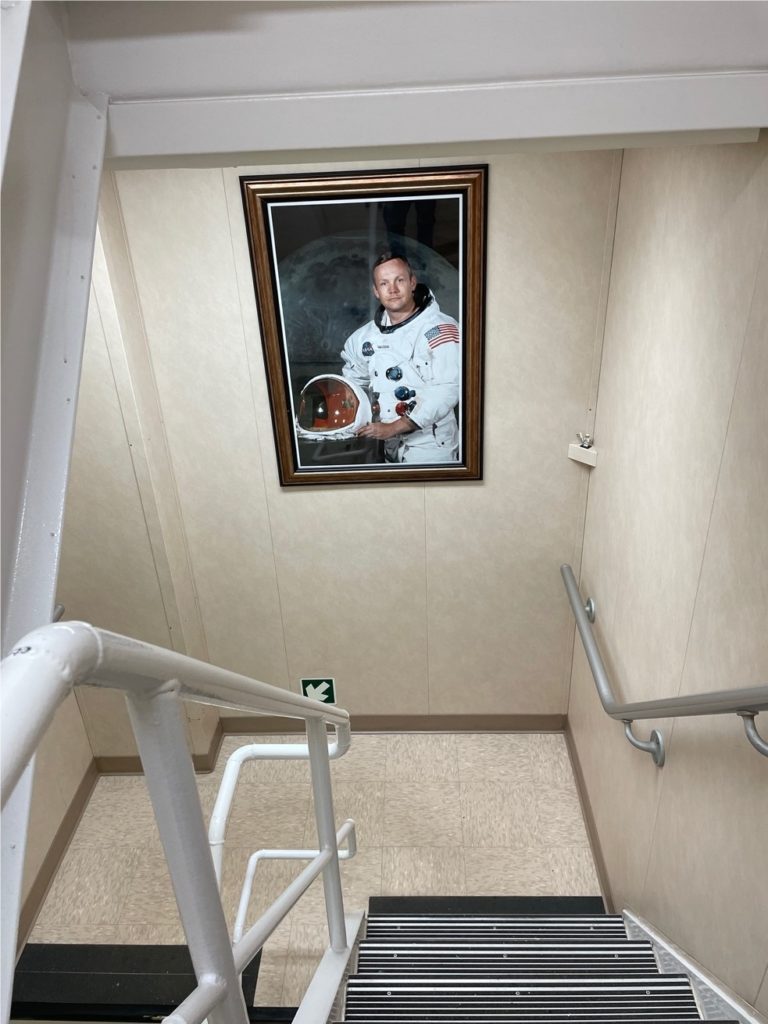By M. Yoder, Boston College
We boarded the R/V Neil Armstrong as scientists on a mission to collect data and redeploy moorings, and while someone is on shift and working 24/7, it’s not all of us at the exact same time. So, what goes on when we’re not deep in the action? Many of the questions we’ve fielded from friends and family are ones we ourselves wondered prior to getting underway. For future oceanographers and the generally interested, read on to find some of the answers to sea-going’s most mysterious questions!
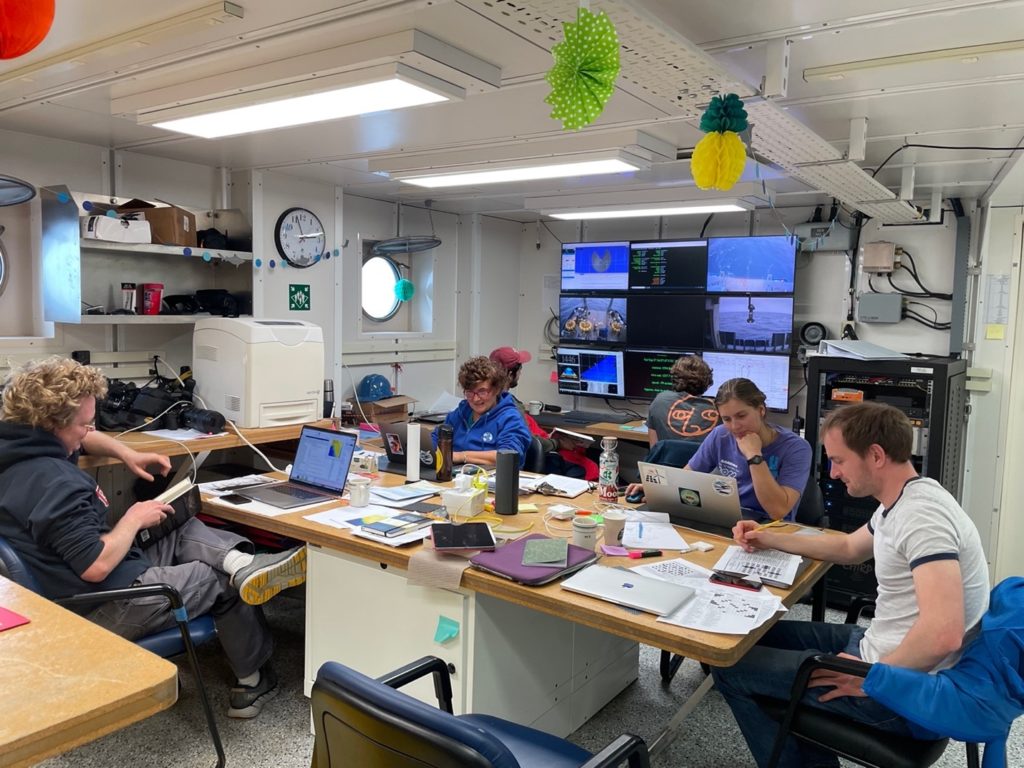
What’s the food like?
In a word, delicious! It would take literary skill far above that of my own to do justice to the myriad of foods we enjoy. Galley crew Eric, Bryan, and Tommy keep us well fed with a rotating menu of yummy and nutritious meals. Somehow nearly four weeks in there is still fresh lettuce, although more canned and frozen foods are making their way into our diets. Anyone whose shift doesn’t align with all mealtimes can have food set aside with their name on it in a special fridge. In between meals, the mess has an assortment of snacks and beverages you can snag if feeling peckish, plus there is a formal mid-afternoon snack time known as cheese-thirty. There’s a banana bread recipe, that if I’m successful in convincing Eric to give me, might be the most valuable piece of data I collect on this trip. (If my advisor is reading this, I am ~partially~ kidding!)
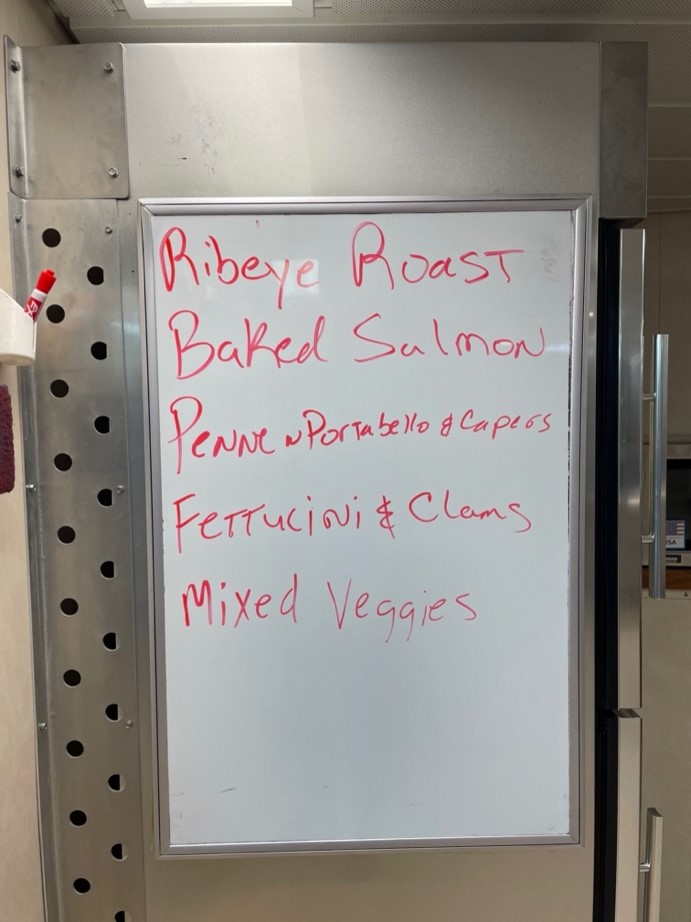
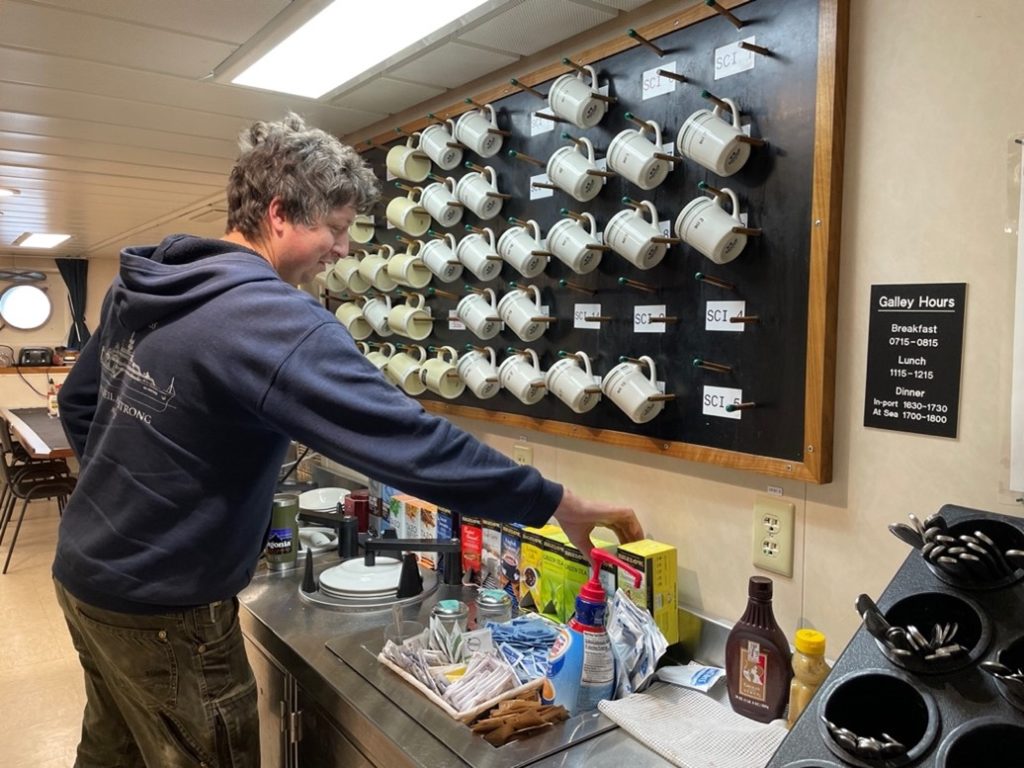
Here, Croy makes some tea at the beverage station. Everyone has their scientist number or crew member title on a corresponding mug, which is your only drinking vessel provided. This allows everyone to take mugs outside of the galley and not mix them up, but also ensures the mugs make their way back, otherwise you won’t have anything to drink out of!
Can you exercise?
If you’re feeling coordinated! We have access to a well-equipped gym, though you’ll need to descend two levels below the main deck, passing through a watertight door and take a ladder through a trap door. A spin bike, rowing machine, free weights, and two treadmills keep us fit, although it takes substantially more finesse when the ship is rolling. The treadmill in particular is not for the faint of heart, with much discussion about where to hang on in order to get the most land-like workout. Some opt to be vertical pole holders, while others channel their inner parent pushing a child in a jogger, and the boldest go tentatively hands-free.
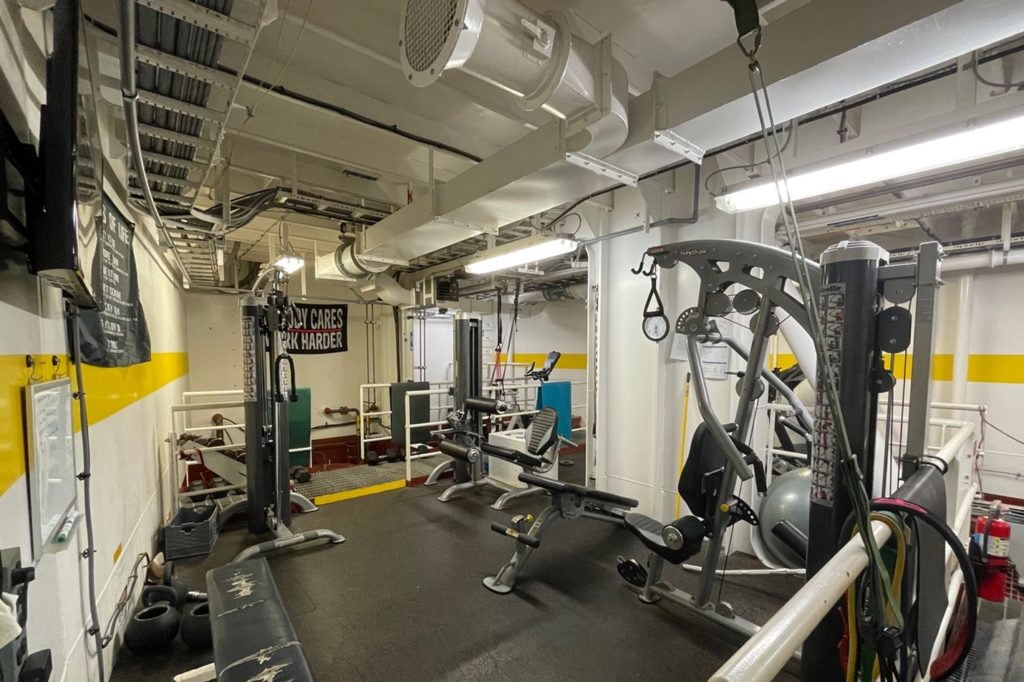
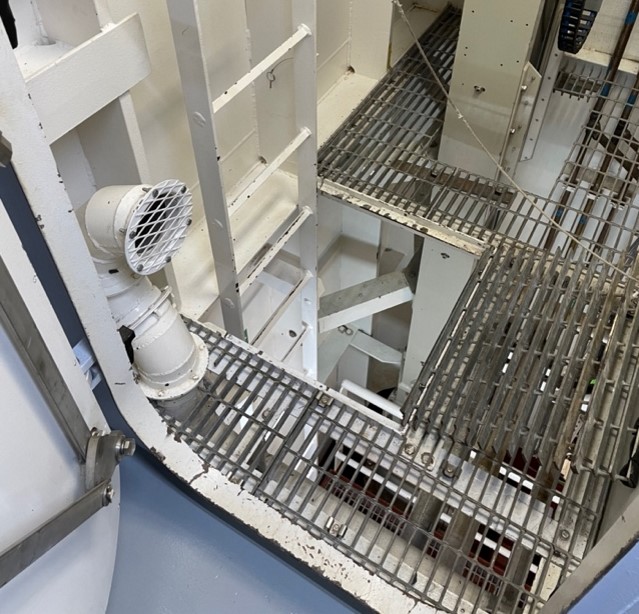
Do you have internet?
Yes! Which you may have guessed considering we posted this from the ship. We each get 2GB of data through the ship’s WIFI every day, a big upgrade from the 1GB on prior 2022 cruises and from the 200 MB a day from 2018. The speed is even fast enough for video calls to loved ones back home.
Can you do laundry?
Yes again! The ship has two washers and dryers in a laundry room. College laundry room rules apply, set a timer or you run the risk of annoying your shipmates and having your clothes moved to the next machine or the counter.
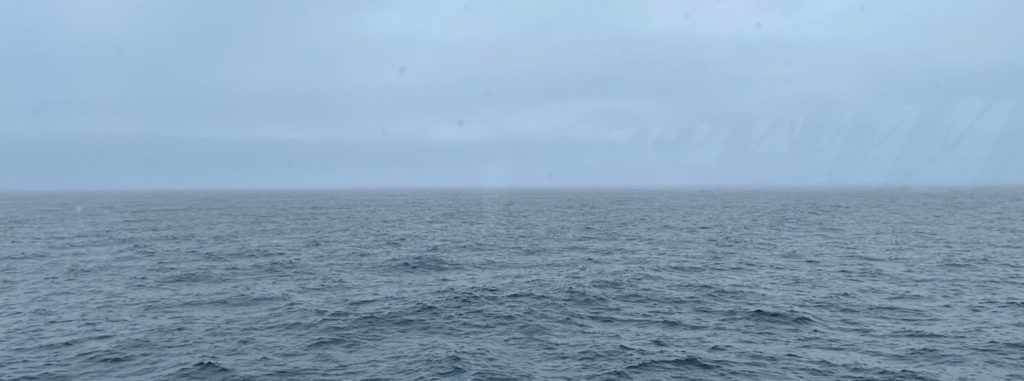
Do you get seasick?
We’ve been extremely lucky with the weather this trip and have had relatively calm seas, although we are currently hiding in a fjord to avoid large swells. Most people come aboard with various seasickness medications and take them depending on the sea state (how rough the seas are) and their sensitivity to motion sickness. Something I personally underestimated was not the seasickness itself, but the challenge of normal life while everything is moving. Walking down the hallway or just standing upright can be more entertaining, or more difficult, depending on your outlook. In my opinion, sleeping is greatly enhanced or hindering depending on the sea state; sometimes the roll is gentle and rocks you to sleep, other times you’re bouncing along the waves and feeling your mattress rise and fall beneath you.
Speaking of sleeping, what are the arrangements like?
Most people share a room with one other person, which has a set of closets, bunk beds with privacy curtains, and a sink. Bedding and towels are supplied. A bathroom with a toilet and shower adjoins with a room next door. For particularly rough weather, there is even a wooden board you can insert between the mattress and frame to prevent the top bunker from taking an unfortunate trip over the edge. Depending on what shift your bunkmate is on, you likely do some getting ready in the dark, either for the day or for bed, and have to adapt accordingly. One technique I’ve employed is pouring the toothpaste directly into my mouth rather than trying to put it on the brush.
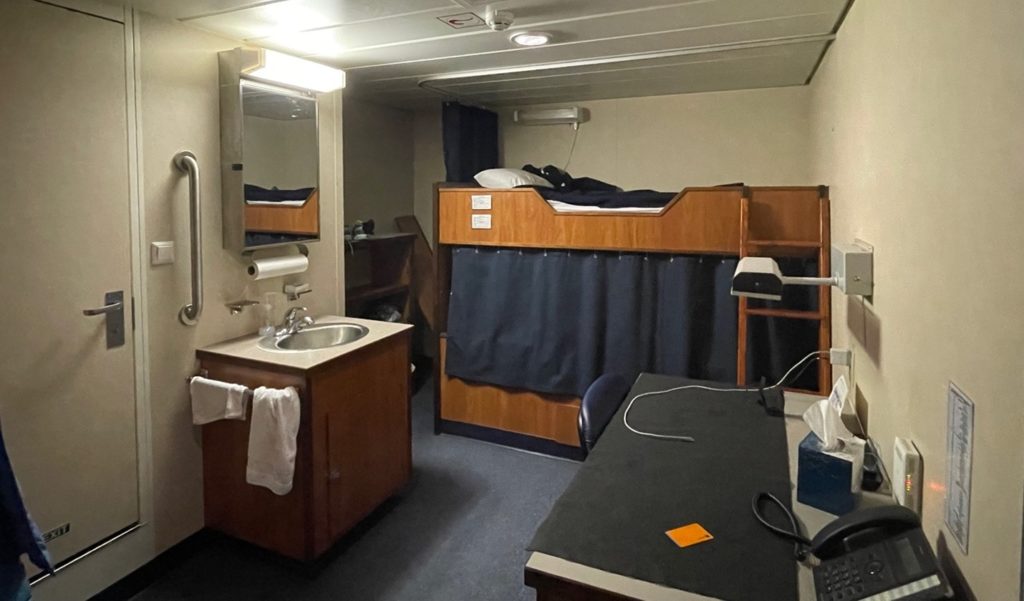
Can you go outside? Can you go on land? Can you swim? Do you feel trapped?
Yes, we can go outside and do it quite frequently, with decks on all sides of the shift and a good deal of the science taking place outside. While we’ve been in sight of land many times, we’re not able to set foot on it as we haven’t gone through customs to enter Greenland, plus there is work to be done on the water! Absolutely no swimming, not that you’d really want to in these 5-10°C (40-50°F) waters. I think whether or not you feel trapped on the ship varies day to day and person to person. Some level of claustrophobia and homesickness is inevitable to varying degrees, but luckily there are plenty of wonderful people on board to spend time with, which leads me to….
What do you do for fun?
Lots! First and foremost, I think I can speak generally in saying that we find it very exciting to make preliminary plots of the data we’re collecting and discuss it with one another.
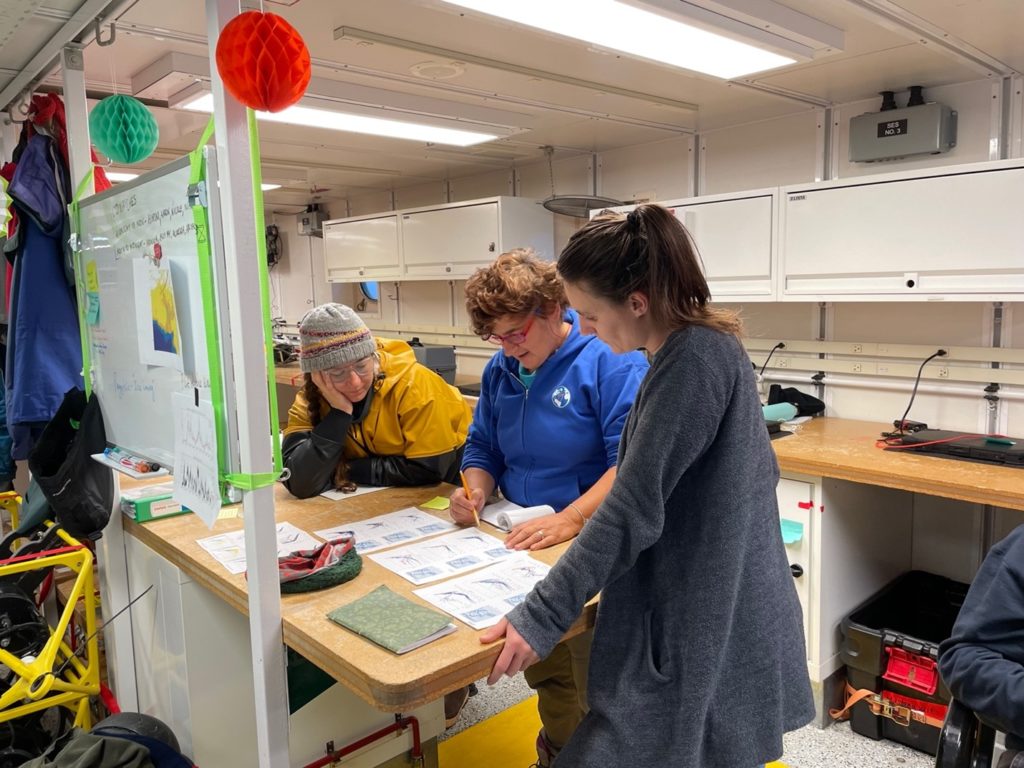
We play games, consisting primarily of group crosswording, some cards, and a complicated game I’ve yet to attempt called Wingspan.
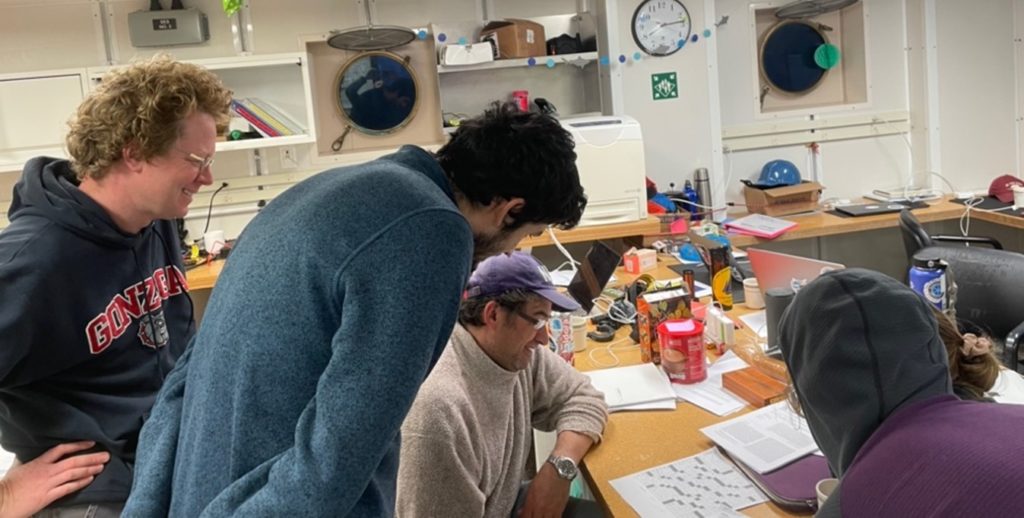
There are plenty of sights to be seen as we’ve been near the coast, admiring icebergs, glaciers, Greenland’s rugged mountains and fjords, sunsets, and the northern lights.
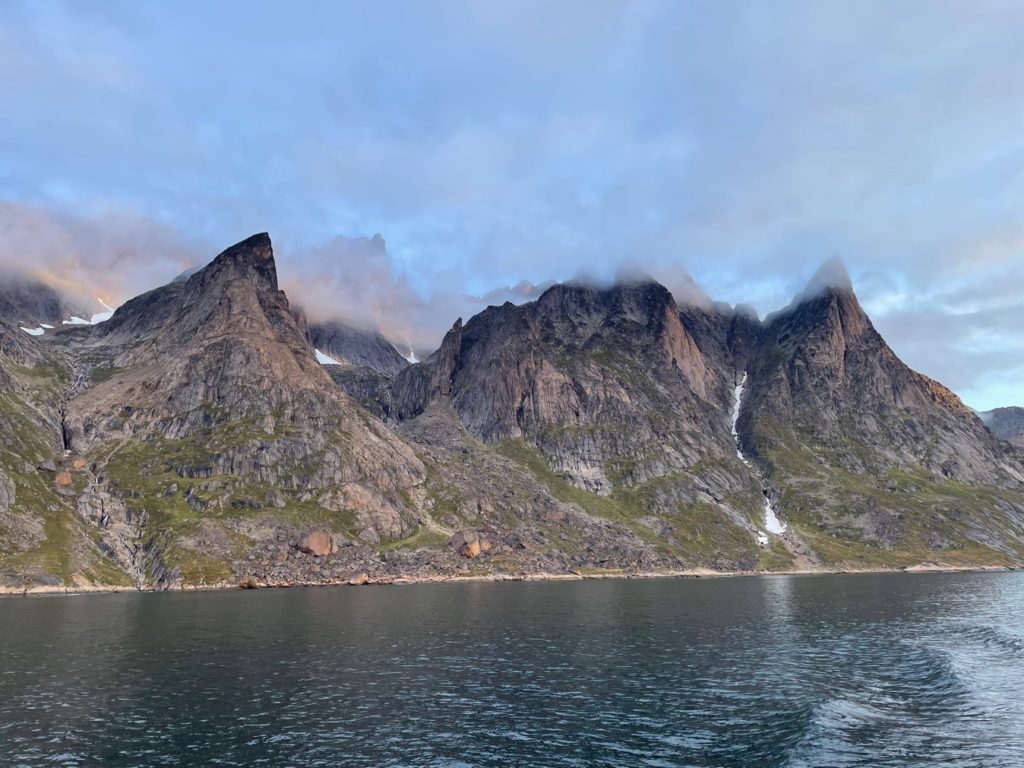
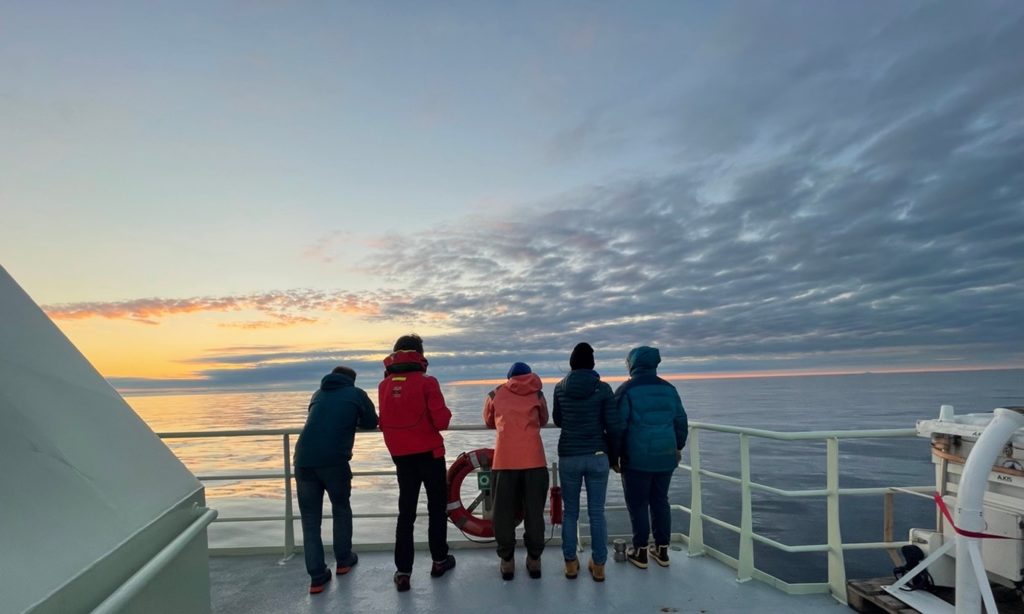
We’ve been seeing a variety of fauna, like pilot whales, puffins, fulmars, and auks. These are logged on the main lab wall with their English and Greenlandic names. We’ve also been learning the Greenlandic names of many places we’ve passed, thanks to Aurora!
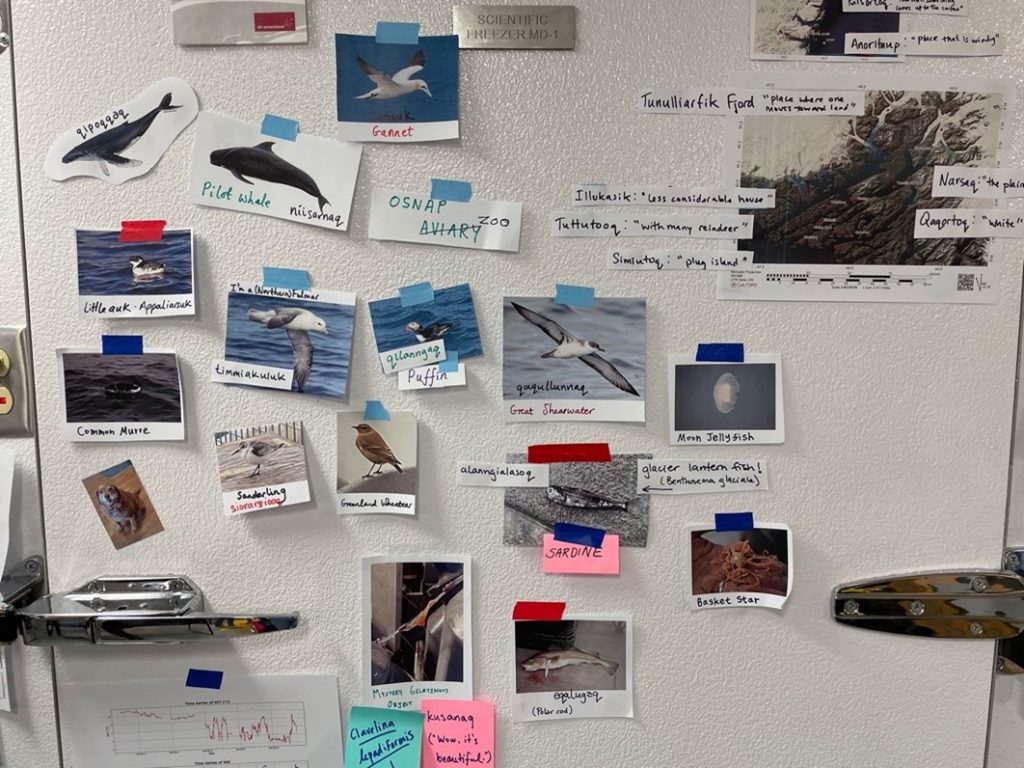
I’d be remiss to not mention being greeted by Neil himself each morning on the way down to breakfast. Hopefully, this has given you some insight into the non-science aspects of life at sea!
